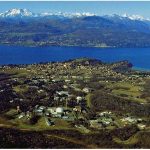At one time, GPS was expected to supplant a wide range of navigation technologies in the world’s positioning, navigation, and timing (PNT) portfolio. But an unexpected thing happened along the way.
At one time, GPS was expected to supplant a wide range of navigation technologies in the world’s positioning, navigation, and timing (PNT) portfolio. But an unexpected thing happened along the way.
As GPS — and more recently, GNSS — moved from concept, to development, to reality, its vulnerabilities became more apparent, along with its remarkable qualities of accessibility, accuracy, and affordability. Interference to low-power GNSS signals, fear of spoofing attacks and intentional jamming, diminished performance in some operational environments — these and other factors have led policy makers and some user communities to reconsider their expectation of GPS universality and, instead, to seek alternative PNT (APNT) resources. In the United States, a 2004 presidential directive mandated creation of a backup system for GPS to ensure the uninterrupted provision of PNT services.
We called on Sherman Lo help us understand what is at stake in the search for APNT. Lo is a senior research engineer in the GPS Laboratory at Stanford University, where he earned his Ph.D. in aeronautics and astronautics. For the last several years, he has served as an investigator for the Federal Aviation Administration’s evaluation of APNT alternatives.
IGM: What are the leading functions/values/features being looked for in alternative PNT systems?
LO: This topic is a source of much discussion in the APNT community as there is not general agreement in several areas. I think the features needed from APNT are generally agreed upon: robustness, integrity/authenticity, and accuracy (timing or positioning).
However, a debate exists about what those things actually entail. For example, while it is clear that APNT must handle a GNSS outage, no consensus has emerged regarding the length of time and extent in area for which an outage must be managed. I think the differences of opinion come from several factors. First, there have been few major incidents of GNSS denial or spoofing. Second, the uses of and threats to PNT are evolving.
I think that the various stakeholders have different time horizons in mind for APNT. The PNT targets and threats in 2035 will be different than those today or 2025. The challenge with PNT (APNT or otherwise) infrastructure is that it takes time to build out, equip, and modify. It is not like consumer devices or software where we can count on rapid turnover or updates. We must think and plan for the future, sometimes far into the future, and get consensus on what is needed.
For example, FAA APNT currently needs to only provide about one-nautical-mile position accuracy. Hence, distance measuring equipment (DME) — either DME/DME or DME/DME with inertial reference unit (IRU) avionics — is sufficient. However, in the future airspace (2025 and later) as envisioned under the FAA Next Generation Air Transportation System (NextGen), reliance on GNSS and GNSS level performance will be greater and some APNT capabilities will need to improve — to perhaps 0.3 to 0.5 nautical mile accuracy along with better low-altitude coverage.
I suspect that similar issues face other industries such as telecommunications, where one-microsecond timing is sufficient for today but we may be talking about 100 nanoseconds or better in the near future.
IGM: The Federal Aviation Administration (FAA) has emerged as a leader in the search for APNT. Are other regulated carriers —rail, maritime, commercial transport, etc. — substantially engaged in this activity and, if so, how?
LO: The FAA has shown great leadership in seeking robust and redundant navigation capability. As for other regulated carriers, the work with which I am most familiar is that of the General Lighthouse Authorities of the United Kingdom and Ireland (GLA) with maritime navigation. The GLA has been at the forefront developing eLoran for maritime APNT and are leading international standardization efforts on eLoran for maritime applications.
However, I feel that other civil agencies are becoming increasingly cognizant of the need for APNT. The Department of Homeland Security (DHS) has engaged in numerous activities to scope out the need for APNT and examining alternatives. It has held interference exercises to help users understand these threats and develop mitigations awareness and supported development of enhanced Loran (eLoran) through its cooperative agreements.
IGM: What are the leading candidate technologies for providing APNT service?
LO: Right now, it seems as if each agency has its own leading candidates. For FAA, DME [distance measuring equipment] will be a basis for APNT in the near term. DHS is looking into eLoran, DARPA is developing chip scale inertials, and so on.
This diversity of solutions is due to many reasons — each group has systems to meet specific special needs of their mission. On one hand, heterogeneous solutions are a good thing, as they make it more challenging for attackers. But on the other hand, from a cost and a security perspective, I feel that it is not good to have too many different solutions. Having fewer solutions will allow us to focus on the security of each solution rather than just counting on security through diversity.
I believe that, as different APNT technologies mature, there will be a convergence of solutions with a handful of trusted systems. We track the development of robust alternatives by other groups, as they may offer significant benefits to our FAA APNT efforts. eLoran, should it further develop in the United States, may provide a source of robust time synchronization for APNT. The availability of low-cost, high-accuracy inertial would be very useful for APNT and reduce the requirements on ground infrastructure.
IGM: What is the state of play for APNT in other nations and what kinds of relations/interactions are there between their efforts and those in the United States?
LO: Several other nations and groups have expressed interest in US FAA APNT activities. Eurocontrol has talked to us about their APNT efforts and plans to investigated it within the next set of Single European Sky ATM Research (SESAR) activities. SESAR is the European airspace modernization plan similar to the US NextGen. We have and continue to work with the German Aerospace Center (DLR) and National Cheng Kung University in Taiwan on various APNT research within their airspaces. We interact regularly with these groups. DLR is a participant with US and European APNT activities. I think FAA leadership on APNT has led many other groups to look more closely at this issue.
Beyond aviation, I think the other major area of APNT is the ongoing eLoran effort in South Korea, the United Kingdom, and the United States. Korea is planning to modernize their existing stations to eLoran and build three new stations. This eLoran is based on the know-how developed in US/UK efforts.
IGM: Is APNT a significant concern for consumers — the people with smartphones, PNDs, in-vehicle navigation systems, etc. — and, if so, how should those concerns be addressed?
LO: I absolutely think that APNT will be a significant concern for consumers for all those items that you mentioned. Positioning is cheap and I think in the future devices will integrate GNSS chips for even minor benefits (for example, GNSS in cameras and laptops).
As for how to address the need for APNT, it depends on the product category and it characteristics. For me, two characteristics come to the forefront. The first is the likelihood and effect on safety of losing PNT. In this dimension, I also think about the likelihood of loss — are there any incentives for jamming or spoofing the GNSS signal in this application. The second characteristic is how quickly would we add new PNT systems should the need arise.
Smartphones seem to be on one end of the spectrum in terms of these two characteristics. First, for these devices the GNSS degradation (interference, spoofing, or otherwise) is generally a nuisance but not a safety event. Second, and most important, smartphones are technology items for which people refresh the technology very quickly, and so new technology can quickly be fielded to address PNT problems if needed.
Other consumer devices (unmanned aerial vehicles, robot lawn mowers) may be more challenging.





